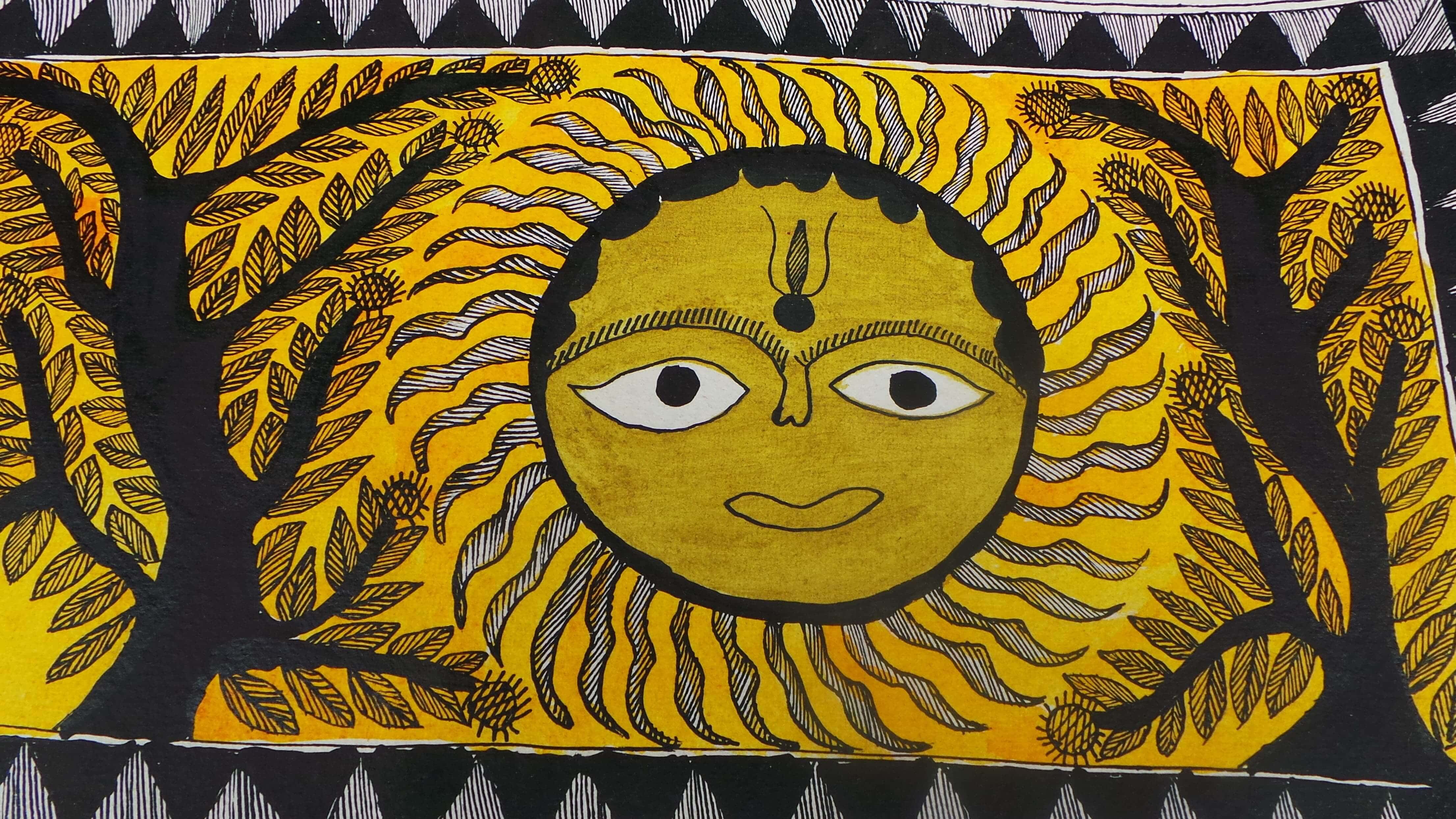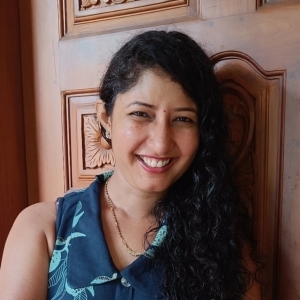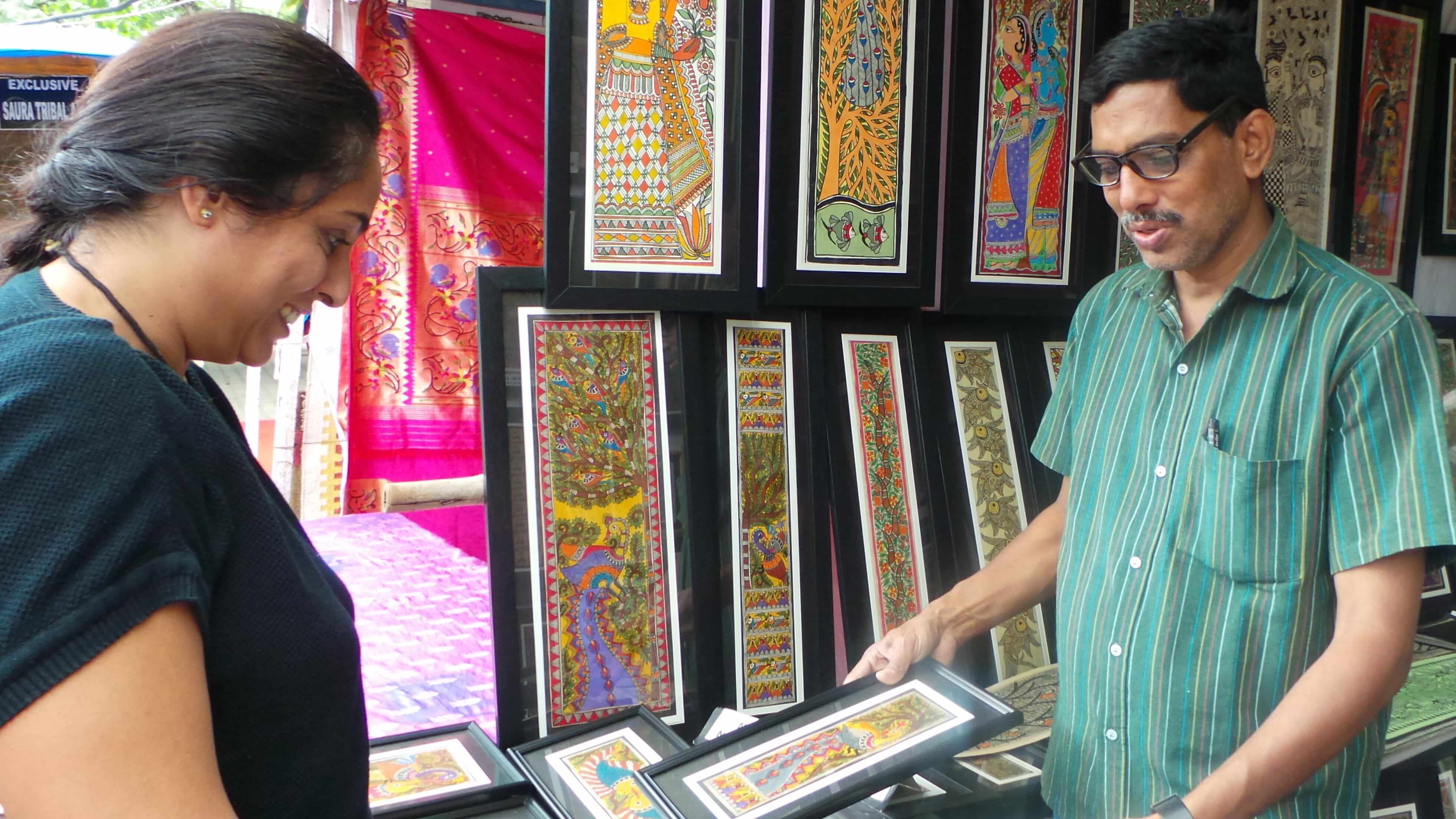
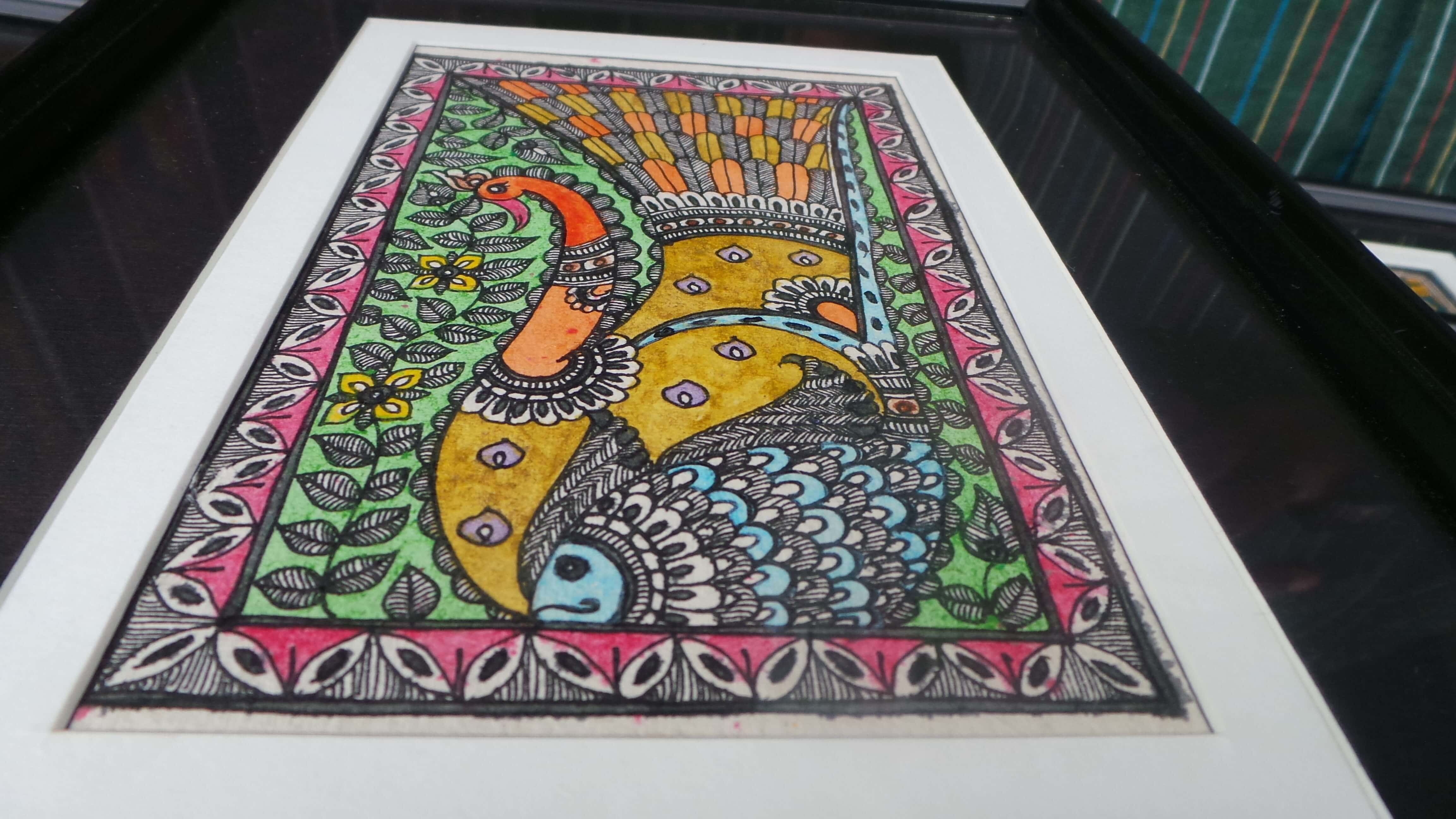
The Bharni Style- This was mainly practiced by the upper castes and depicted Mythological characters in epics, especially the Ramayana and Mahabharatha which the womenfolk knew from continued recital.They used rich vibrant colours and had no restrictions. Sita Devi is considered a pioneer in this form. Bharni means filling. As the forms of Vishnu, Krishna, Kali and other Gods depicted are filled with colours, so the name.
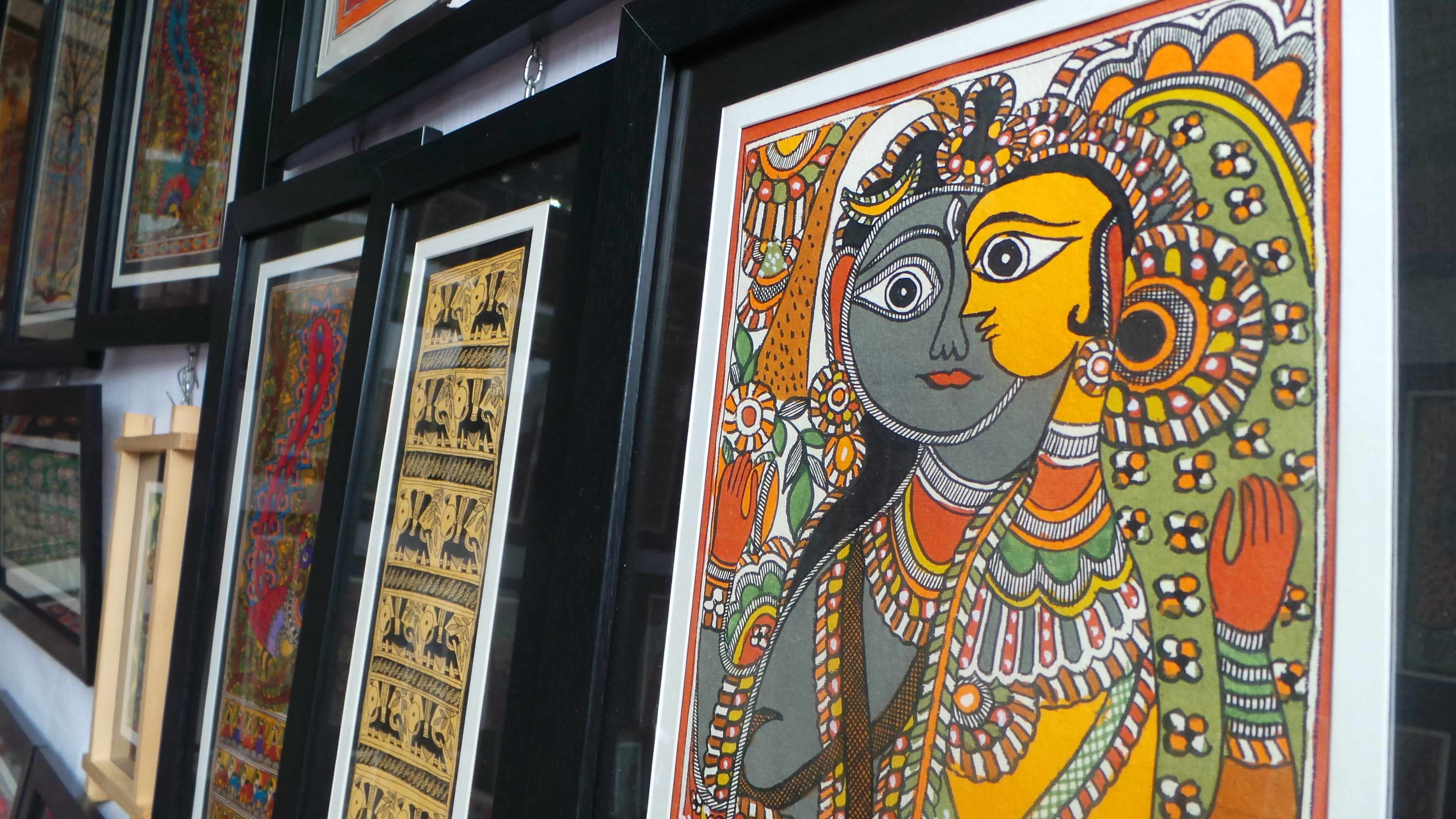
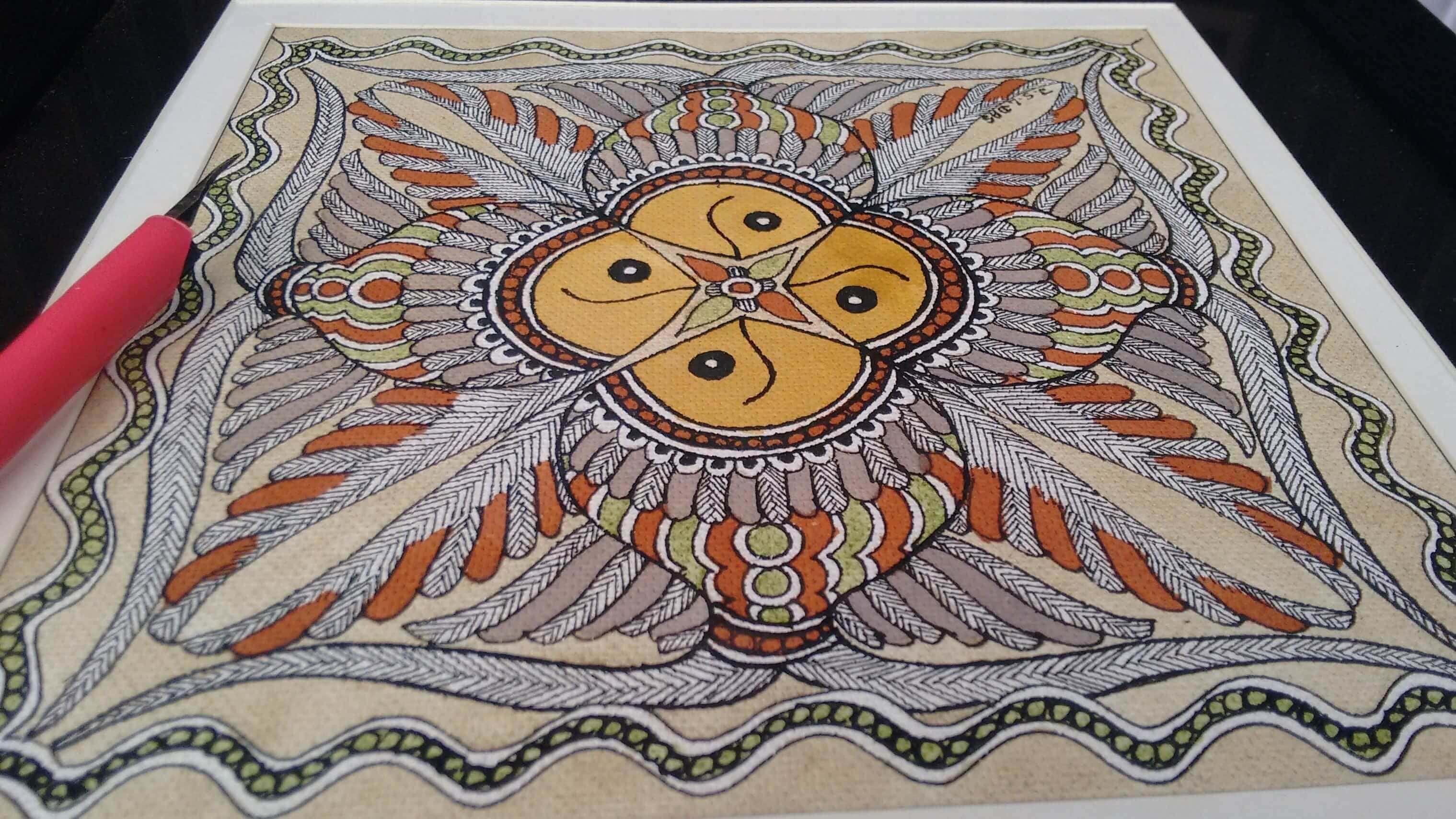
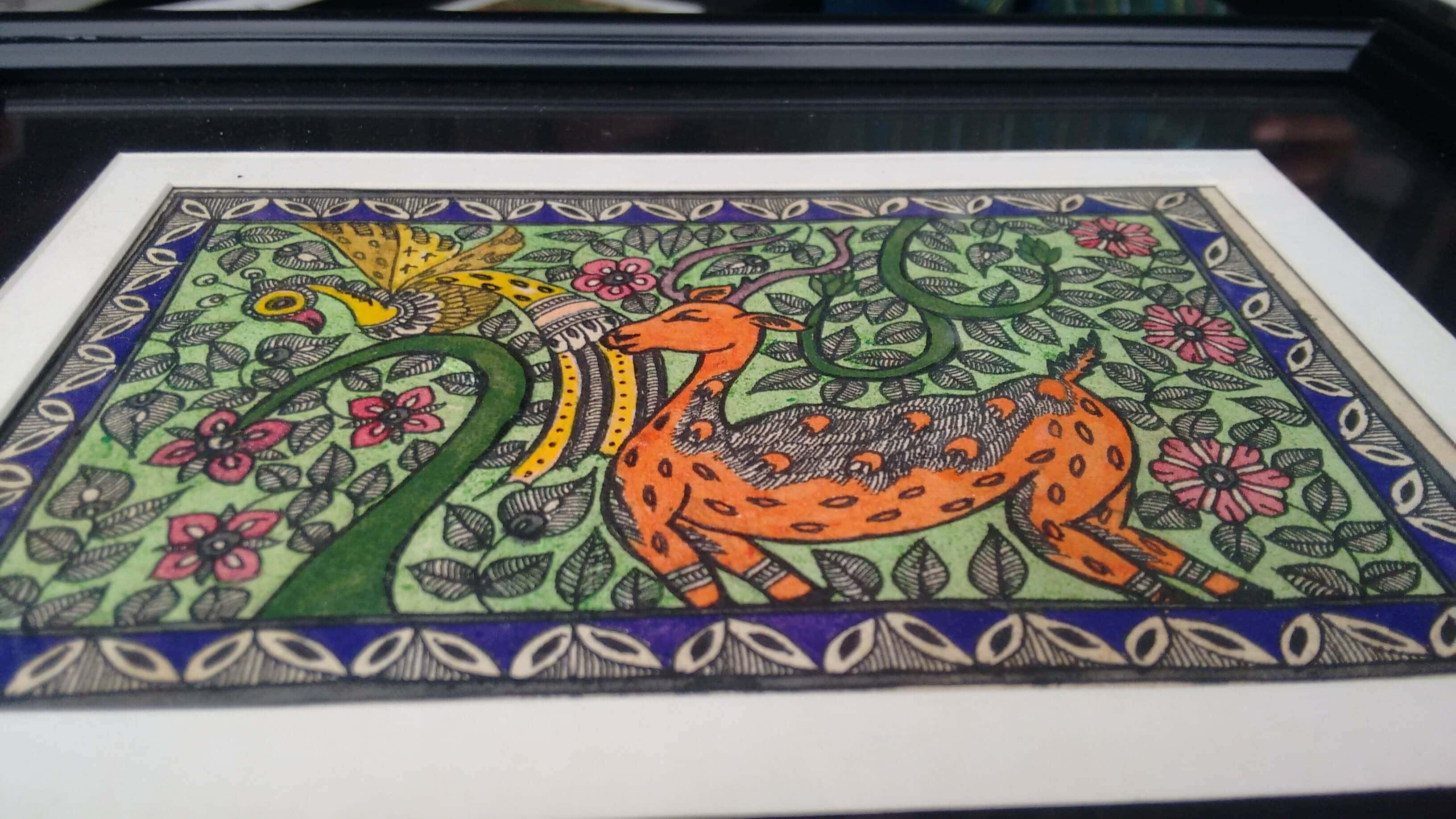
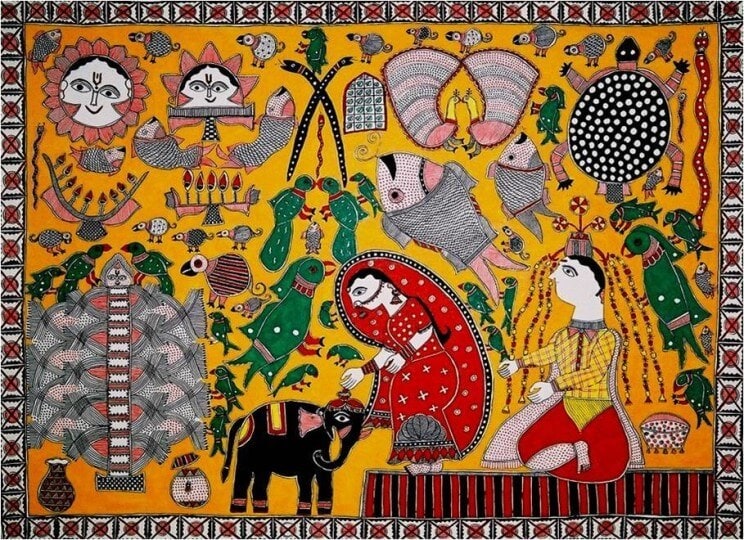
- Two dimensional, with sharp nose and big eyes.
- There are no blank spaces. Geometric designs are used generously to fill the blanks.
- Traditionally done on mud walls plastered with cow dung but now being painted on handmade sheets.
- Natural colours are used. Bel leaves, mehendi leaves for green, neelkanth flower for blue, harsingar flower for pink, rose for red, tender turmeric for yellow, lamp ash for black. These are mixed with gum water so that they get bound to the paper. But in the current scenario, many use acrylic and water colours, though there are a few artists who use natural colours.
- Nib is used for outline(it is captured in one of the pics)
You see here, many of the paintings have fish as a common motif. That’s because fish is an ‘all in one’ symbolising love, fertility and prosperity. The artist says, “Maach, paan aur makhaan, Shubh maana jaata hai’”. (That is fish, beetle leaf and lotus seeds are good signs.) Well, we all need good signs.
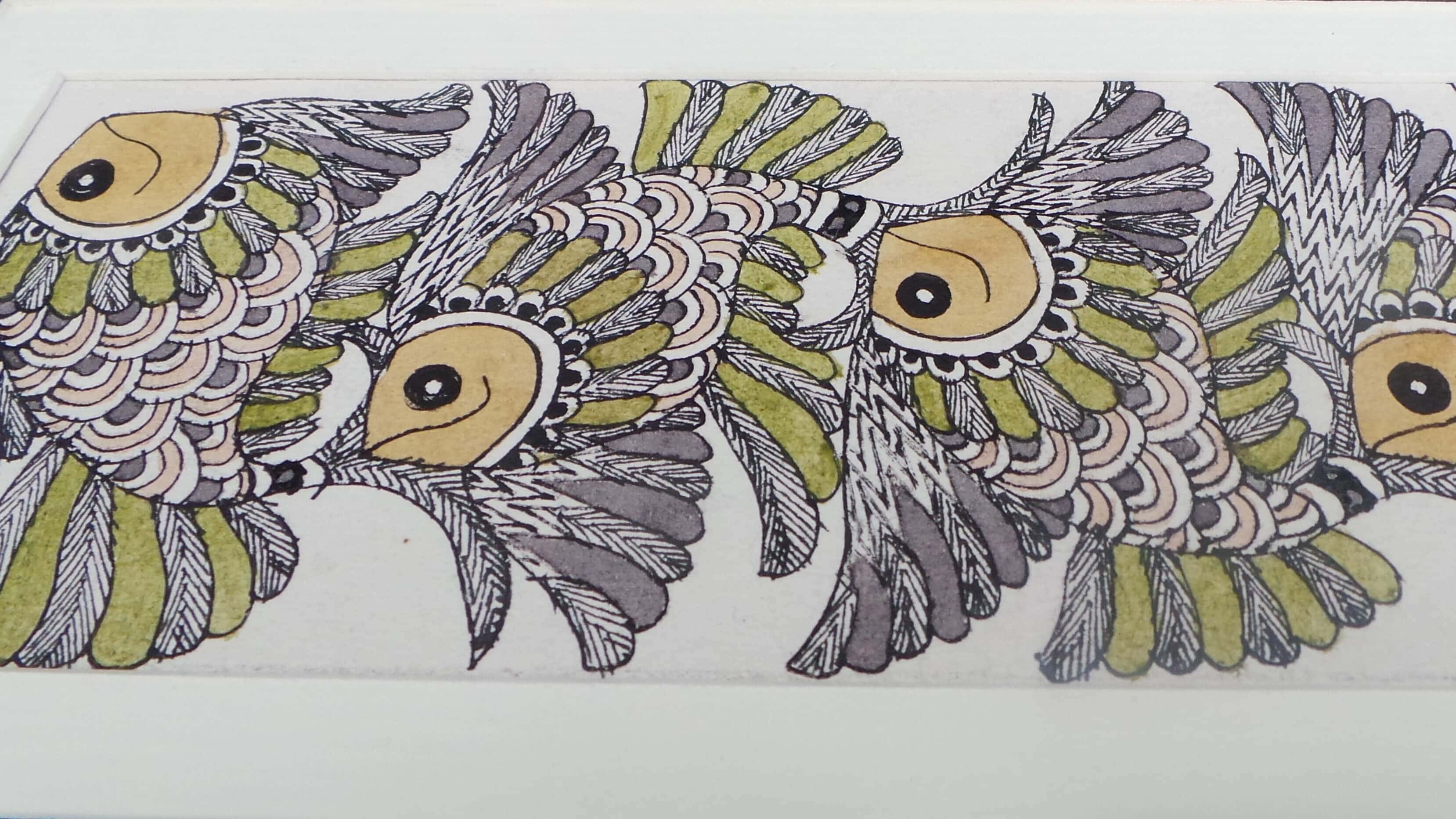
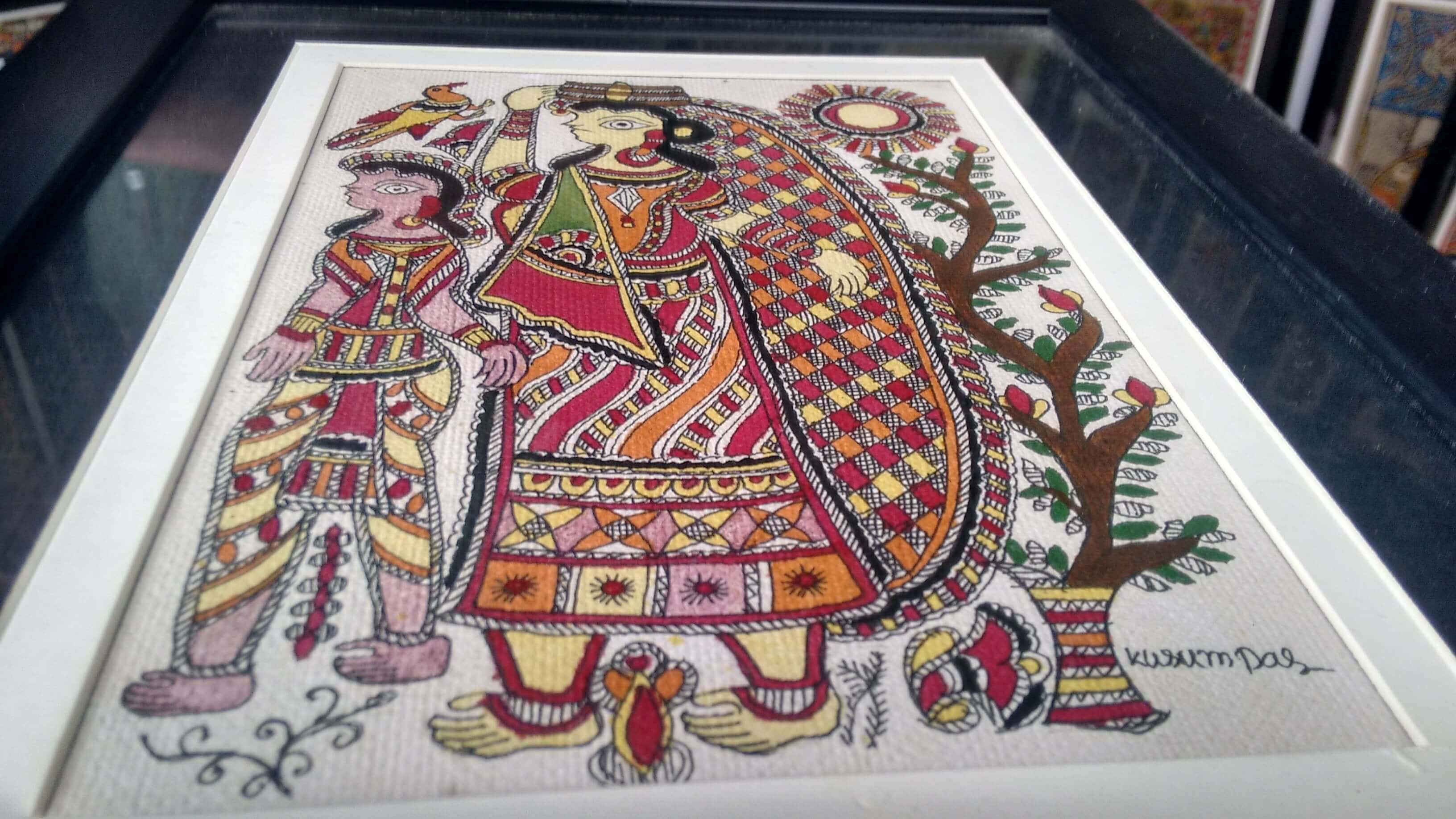
Hope you enjoyed this post. Have a great week. Lots of twinkles to you!
Anupama

